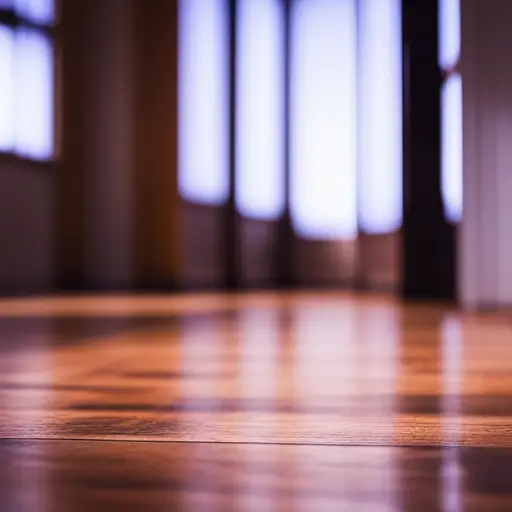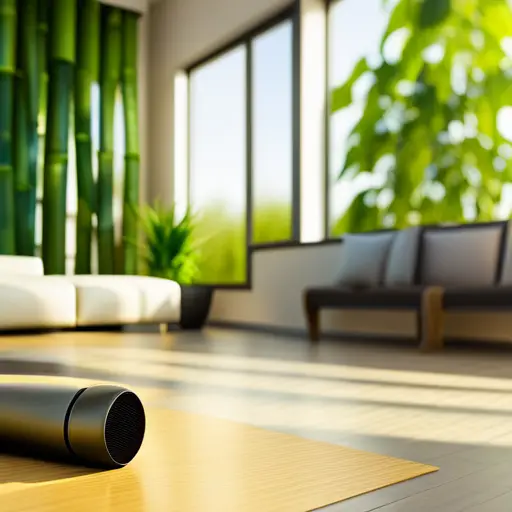Flooring Upgrades for Aging Properties

‘Out with the old, in with the new’ holds true for aging properties seeking flooring upgrades. As properties age, the flooring may require special attention to ensure longevity, safety, and aesthetic appeal.
This article explores the types of aging flooring, considerations for upgrades, popular materials, maintenance tips, and safety features to enhance the value and appeal of aging properties.
Whether for residential or commercial spaces, informed flooring choices can revitalize and modernize aging properties.
Types of Aging Flooring
The most common types of aging flooring in older properties include worn-out carpeting, cracked tiles, and warped hardwood. When dealing with such aged flooring, it’s crucial to consider refinishing options and restoration techniques.
Refinishing worn-out hardwood floors can breathe new life into a space, offering both a cost-effective and sustainable solution. Restoration techniques such as re-stretching carpeting and repairing cracked tiles can save the historical preservation of vintage aesthetics while providing a fresh look.
For historical preservation, it’s essential to explore refinishing and restoration methods that maintain the original charm and character of the property. Choosing refinishing options that align with vintage aesthetics can help retain the historical significance of the flooring while updating its appearance. Additionally, restoration techniques tailored to the specific era of the property can enhance its overall appeal.
Considerations for Flooring Upgrades
Considerations for flooring upgrades in aging properties should take into account both the historical preservation of the property and the practicality of modern materials and techniques. When planning flooring upgrades for aging properties, it is essential to prioritize flooring durability and slip resistance enhancements to ensure safety and longevity. This can be achieved through the following considerations:
-
Historical Preservation
-
Retain original flooring materials if possible to maintain the historical integrity of the property.
-
If replacement is necessary, opt for materials that closely resemble the original flooring to preserve the property’s historical aesthetics.
-
Practicality of Modern Materials
-
Explore modern flooring materials that offer enhanced durability to withstand the wear and tear associated with aging properties.
-
Prioritize slip-resistant flooring options, especially in areas prone to moisture or where elderly individuals may walk, to mitigate the risk of accidents.
By carefully considering these aspects, flooring upgrades can successfully balance historical preservation with the practicality of modern materials and techniques. This sets the stage for exploring popular flooring materials suitable for aging properties.
Now, let’s delve into the subtopic of ‘Popular Flooring Materials for Aging Properties’.
Popular Flooring Materials for Aging Properties
When selecting flooring materials for aging properties, prioritize options that offer both historical authenticity and enhanced durability to ensure longevity and safety. Two popular flooring materials that meet these criteria are bamboo flooring and cork flooring. Bamboo flooring provides a beautiful, eco-friendly option that is harder than most hardwoods, making it an ideal choice for high-traffic areas in aging properties. Its natural resistance to moisture and insects also makes it suitable for various climates. On the other hand, cork flooring offers a comfortable and warm surface, perfect for reducing impact on aging joints and providing a soft feel underfoot. Its natural shock-absorbent and sound-insulating properties are beneficial for aging individuals. Below is a comparison table highlighting the key features of these popular flooring materials:
| Features | Bamboo Flooring | Cork Flooring |
|---|---|---|
| Durability | High | Moderate |
| Comfort | Hard surface | Soft surface |
| Eco-Friendly | Yes | Yes |
| Moisture Resistance | High | Moderate |
| Insulation | Good | Excellent |
This table provides a clear comparison to aid in making an informed decision when selecting the most suitable flooring for aging properties.
Flooring Maintenance and Longevity
As aging properties require flooring that can withstand wear and tear, it is essential to prioritize regular maintenance and proper care to ensure the longevity of the chosen materials.
Flooring durability is crucial in prolonging the lifespan of the floor, and the following maintenance techniques can aid in achieving this goal:
-
Regular Cleaning Schedule:
Implement a routine cleaning schedule to remove dirt, dust, and debris that can cause scratches and deterioration over time. Utilize appropriate cleaning products and methods suitable for the specific flooring material to prevent damage. -
Preventive Measures:
Place doormats at entry points and protective pads under furniture to minimize scratches, dents, and scuffs. Promptly address spills and leaks to prevent moisture from seeping into the flooring, leading to warping or mold growth.
By adhering to a regular cleaning schedule and implementing preventive measures, the flooring’s durability can be significantly enhanced, ultimately extending its longevity. These maintenance techniques not only preserve the aesthetic appeal of the flooring but also contribute to the safety and structural integrity of aging properties.
Now, let’s delve into the importance of incorporating safety features in aging property flooring.
Safety Features in Aging Property Flooring
To ensure the safety and well-being of occupants in aging properties, it is imperative to incorporate safety features in the flooring. This builds upon the importance of regular maintenance discussed in the previous subtopic.
Non-slip options are essential for aging properties as they provide traction and reduce the risk of slips and falls, especially in areas prone to moisture such as bathrooms and kitchens. These options include textured tiles, slip-resistant coatings, and vinyl with non-slip backing.
Additionally, cushioned support is crucial in mitigating the impact of accidental falls, especially for elderly individuals. Flooring materials like cork, rubber, and certain types of carpet provide a level of cushioning that can help minimize the risk of injury. Moreover, the installation of cushioned underlayment beneath hard flooring surfaces can also enhance impact absorption.
By integrating non-slip options and cushioned support into the flooring of aging properties, the safety and comfort of occupants can be significantly improved, reducing the likelihood of accidents and injuries.
Transitioning into the subsequent section about ‘enhancing property value through flooring choices’, it is important to note that safety features not only prioritize well-being but also contribute to the overall appeal and market value of aging properties.
Enhancing Property Value Through Flooring Choices
When it comes to aging properties, flooring choices can significantly impact the overall value of the property. The type of flooring can influence resale value, making it an important factor to consider for property owners looking to enhance their investment.
Understanding the relationship between aging properties and flooring options can provide valuable insights into maximizing property value.
Flooring and Resale Value
One crucial factor in enhancing the resale value of aging properties is the choice of flooring. The right flooring options can significantly impact the overall appeal and value of a property, making it a crucial consideration for homeowners looking to increase their resale value.
When considering flooring options to enhance resale value, it’s important to focus on:
-
Durability: Opt for long-lasting materials such as hardwood or laminate, which can withstand wear and tear, thus adding long-term value to the property. Engineered hardwood and porcelain tiles are excellent options known for their durability and resilience to high foot traffic.
-
Aesthetics: Choose flooring materials and designs that appeal to a wide range of potential buyers, ensuring that the property’s flooring enhances its visual appeal and attracts more interest from prospective purchasers.
Aging Properties and Flooring
The flooring choices for aging properties play a crucial role in enhancing the property’s value and appeal to potential buyers. When considering flooring upgrades for aging properties, it’s important to prioritize accessibility features and slip resistance. Incorporating features such as level transitions, wider entryways, and slip-resistant surfaces can greatly enhance the property’s appeal to older adults and individuals with mobility challenges.
Additionally, choosing flooring materials with excellent slip resistance, such as textured tiles, luxury vinyl planks, or rubber flooring, can significantly improve safety and reduce the risk of falls, which is a top concern for many aging property buyers.
Frequently Asked Questions
How Do Flooring Upgrades for Aging Properties Differ From Flooring Upgrades for Newer Properties?
When considering flooring upgrades, differences arise between aging and newer properties due to installation challenges, maintenance requirements, aesthetic appeal, and resale value. Aging properties may require more structural considerations and focus on durable, low-maintenance options.
Are There Any Specific Flooring Materials That Are Best for Addressing Mobility Issues in Aging Properties?
When addressing mobility issues in aging properties, it is crucial to consider flooring materials that prioritize safety and accessibility improvements. The best materials for this purpose should provide traction, be slip-resistant, and accommodate mobility aids.
What Are the Potential Cost Implications of Installing New Flooring in an Aging Property?
Cost implications of installing new flooring in aging properties can vary based on material, labor, and scope. However, the long-term benefits, including improved aesthetics, functionality, and potential property value increase, make it a worthwhile investment for homeowners.
Are There Any Special Considerations for Choosing Flooring Materials for Properties That House Elderly Individuals or Individuals With Mobility Issues?
When choosing flooring for properties housing elderly or individuals with mobility issues, it’s crucial to consider safety and accessibility. Flooring options like non-slip materials, low-pile carpets, and smooth surfaces can enhance safety and ease of movement.
What Are Some Innovative Flooring Options That Can Help Improve the Overall Safety and Accessibility of Aging Properties?
Innovative flooring options can significantly improve the safety and accessibility of aging properties. Slip-resistant options and low-maintenance materials provide essential support for elderly individuals or those with mobility issues, enhancing their quality of life.
Conclusion
In conclusion, upgrading aging property flooring is essential for safety, longevity, and property value.
Like a sturdy foundation for a building, the right flooring materials and maintenance can provide a solid base for aging properties.
Consideration of safety features and popular materials will ensure a successful upgrade, enhancing the overall value and appeal of the property.

Rubin Everest, a seasoned expert in the world of flooring, brings a wealth of knowledge and passion to the surface. As the mind behind ebbow.com, Rubin is dedicated to sharing insights on the latest trends, innovative solutions, and expert advice in the realm of flooring. Whether you’re seeking practical tips for installation or design inspiration, Rubin Everest is your go-to source for all things flooring-related, making your journey to the perfect floor an informed and enjoyable experience.





